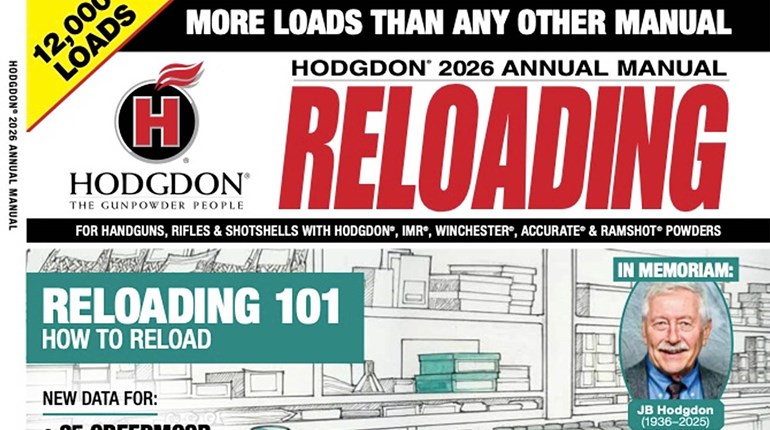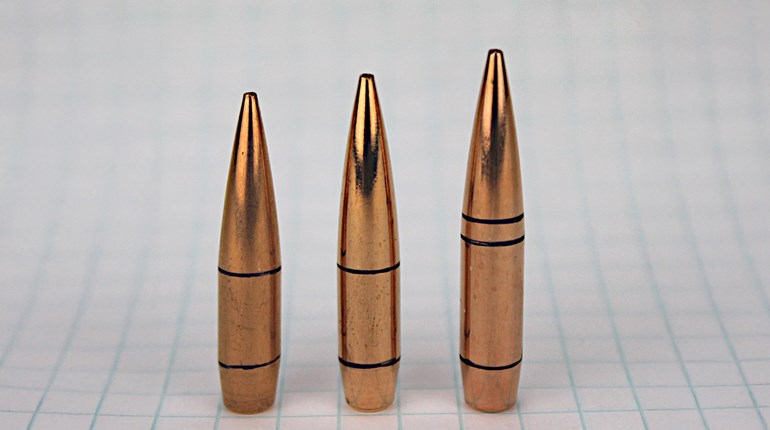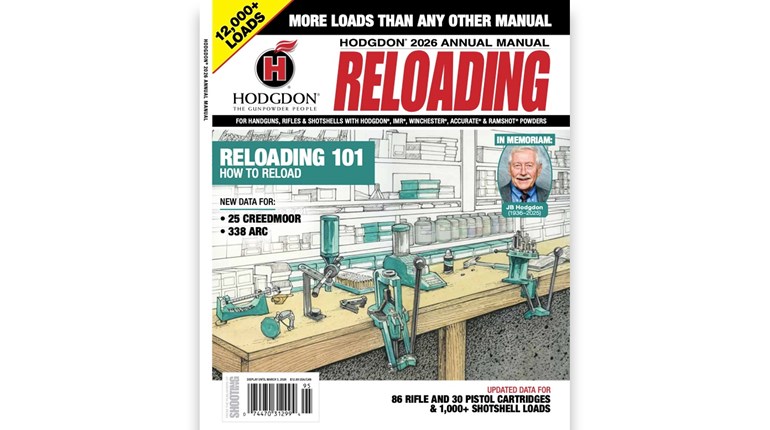
Our reloading series is getting right along, so much so, if fact, that the third of four components gets added to our developing cartridge in this installment.
Eventually.
If that elicits a groan, we are sympathetic, but only sympathetic: In terms of safety, charging the case is where a redoubled dose of caution is due. Primers are in some respects more volatile (as we noted here and here), but packaging and geometry are likely to keep the consequences of any mishap small, or merely render a cartridge inert. But adding powder to that sized, reprimed, flared beauty you’ve created is where mistakes can be both disguised and consequential. As with all our steps, we’ve no hope of being all-inclusive—that’s what your reloading manual and hundreds of online resources are for. But in terms of the “big” mistakes, most fall into three categories.
Measure, Measure, Measure
There are lots of anecdotal stories of powder allotment per case being, er, variable, or even haphazard, yet still yielding good (as well as safe) results—targets hit, firearms intact, matches won, glory, riches, etc. A few of them may even be true. But none of these would be ours, we can say for sure: Every time we’ve ever tried to cut corners, we’ve been sorry. No disasters to be sure, but that may just be luck.
Humdrum as it seems, we own about six reloading books and have another half-dozen or so bookmarks on the web we trust, but if it isn’t in these locations, we dial “M” for data. As in “manufacturer." Most of the powder guys (and women) are astonishingly helpful, and several times they’ve had the not-yet-in-print goods we needed to solve a reloading problem.
For handguns, the big worry is usually over-charging. This is what spelled the demise of the pictured Smith & Wesson (we’re glad to report, not this one). There are a huge number of possible mechanisms for this, but most boil down to one crucial failure: No visual inspection of the case after charging. And whether it’s a failure-to-index in your progressive machine, or simply dropping two charges through inattention, this is the rule never to break. Look at every charge you drop; any doubts, start again.
For rifles, it strikes many a new reloader as peculiar that under charging is the more likely and more dangerous cause of problems—usually catastrophic ones, too—in rifle cartridges. This is due to the phenomenon of “detonation” as opposed to mere burning of the powder in the case as a result of the primer flash. Primer ignition through the flash hole is intended to ignite powder in a relatively narrow range of volumes that are calculated with the “given” that powder always covers the flash hole when firing occurs, no matter the attitude of the cartridge. Even if the flash hole is uncovered in a seriously down-angle shot, the empty volume in the case and exposed surface area of powder remains small enough to prevent detonation as opposed to the chemically controlled “burn rate” of the powder.
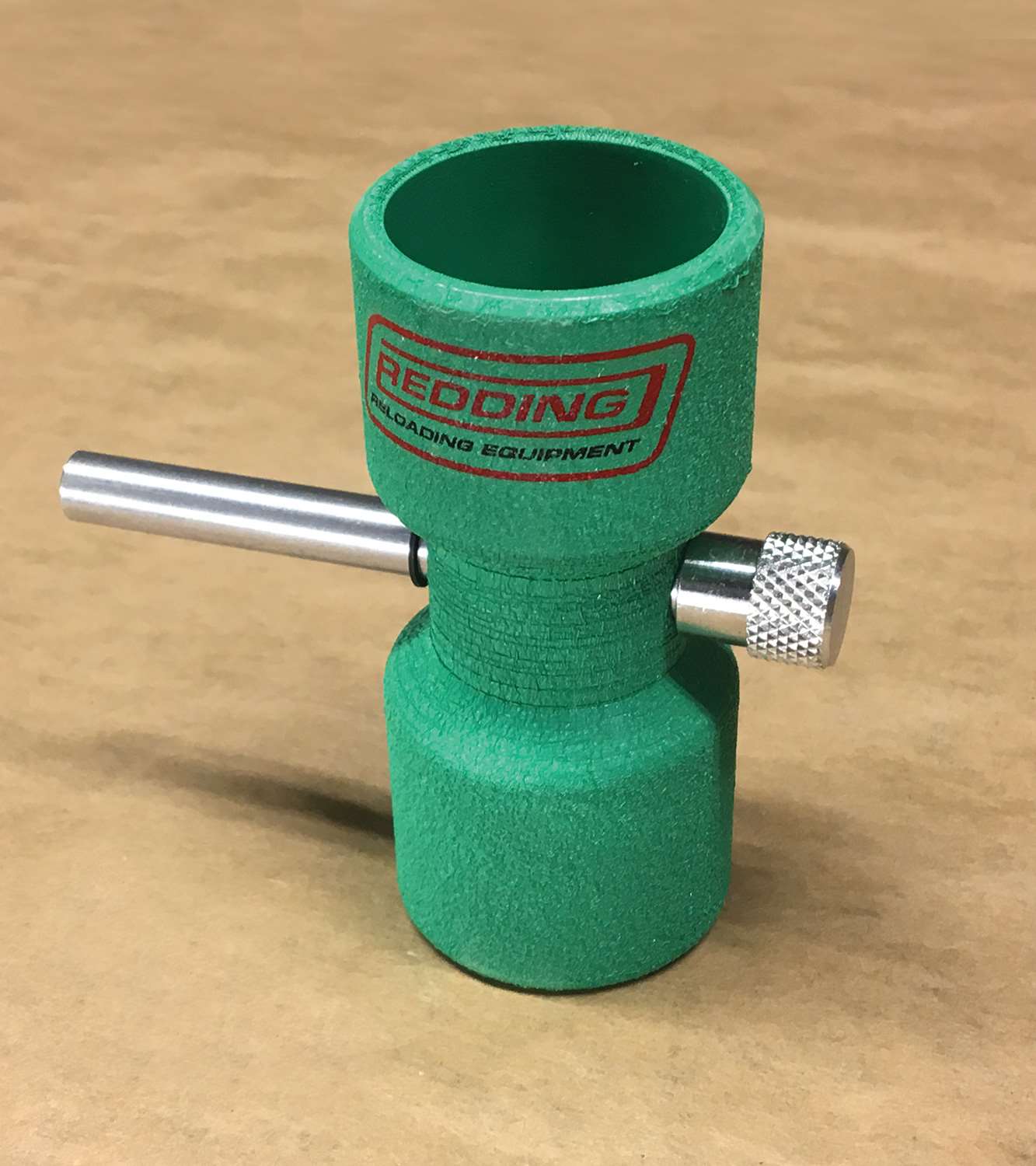
If a case is undercharged, however, and the flash hole uncovered when primer ignition occurs, the flash reaches a vastly greater exposed surface area of powder, and ignites too much powder in too short a period of time. Generally it leads to a kaboom, and good-bye firearm. This is much rarer in pistols, mainly because by the time the flash hole is uncovered, the charge is so small that a “detonation” is little different in energy terms than a “burn.” Does this mean you can drop charges willy-nilly to soften things up, recoil-wise, in your pistols? No; while it’s less likely you’ll get a detonation in a pistol, it is not unknown. There’s also the danger of lodging a projectile in the barrel, and then following it with another.
Shotgun reloaders are by no means safe from over- or under-charging issues, though their measurement systems are quite different. While rifle and pistol reloaders use a scale to set the “drop” weight of a given powder and adjust the metering screw of a measure to match, shotgunners run by the volume of bushings to derive weight. But the wrong bushing/powder combo? Back to “kaboom” if too much (of a very fast powder, say), and a different sort of “kaboom” if too little (a wad still in the bore when another shot is fired).
If your head is spinning a bit, we sympathize (again); slow the rotation by following the instructions in your loading manuals as we said at the outset. And borrow the carpenter’s rule too: Measure twice, cut—or drop powder—once.
Measurement Mechanics
This is easy: Get the best scale you can afford. This is especially true if you fancy an electric weighing/measuring technology: It’s our opinion that anything under $50 in this arena isn’t worth considering. Mainly, these seem very sensitive to battery state to stay accurate, and this will eat you alive in short order. A $75-95 beam scale, on the other hand, and a powder trickler (~$25) may keep you going for decades with a little simple care. Half MOA groups of self-made ammunition are perfectly possible with such time-tested technology.
Get and regularly use a set of check weights if your measure is not supplied with some (most are not). These seem absurdly costly only if you fail to compare them to the cost of the errors they can prevent.
Are the bigger/better electronic scales worth it? You betcha, but even techno-nuts (us) shouldn’t delay reloading one minute in order to afford one. They will help you to go faster on high-precision rifle, but they aren’t a whit more accurate than what we suggested above. That beam scale you’ll likely start with is a mighty fine backup too, and the trickler will let you add individual powder grains one or two at a time. Charge weights can be ultra-precise with either technology.
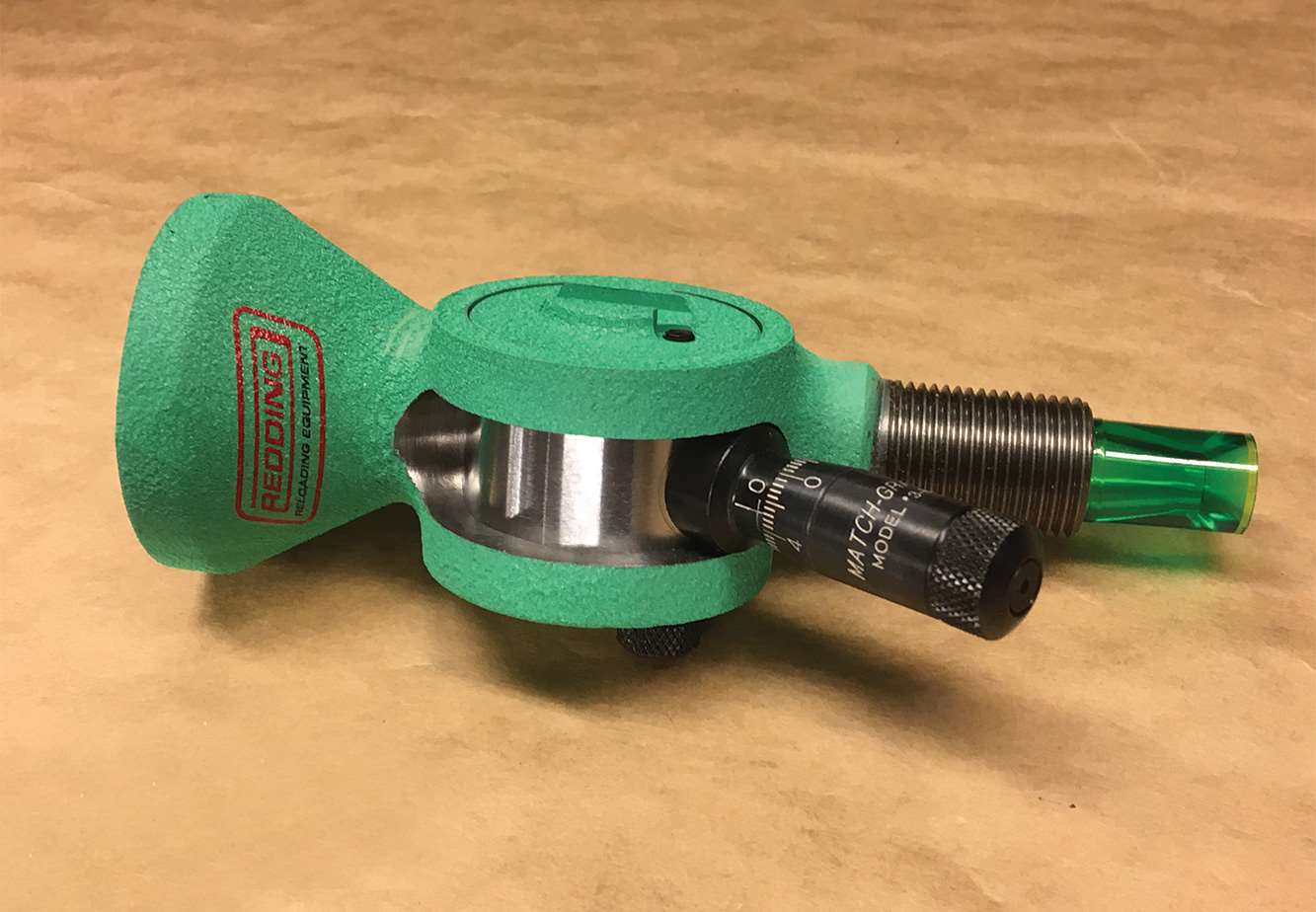
Just any old scale you already have is unlikely to be truly suitable to your reloading, no matter how precise. In the United States, measurements take the unit of “grains,” or 1/7000th of a pound (or one gram equals 15.4234 grains). Reloading scales (and the beam/balance types especially) default to this generally, and we couldn’t recommend anything that forces a mental calculation for each and every measurement. The likelihood of a mis-measurement is just too great, with predictable (and bad) results.
Powder measures are the actual dispensers of powder. On progressive presses, they mount right to one of the die positions, and through an armature system of some kind use rotational energy to “drop” powder from a screw-calibrated cylinder into the case. In turret and single-stage systems, they may mount or stand alone. Although the pivot mechanism differs, the arm still rotates the calibrated cylinder into a funnel, dropping the powder and charging each case in turn.
We are a touch persnickety about powder measures: They are often less accurate than you’d hope in their standard configurations (+/-.2 grains is routine). This is 1/35,000th of a pound, we know, but it is perversely detectable in some powders and load formulas (especially small volume pistol cases). While you probably don’t need to budget for this on the front end, we wouldn’t recommend any powder measure that doesn’t have a provision for “match grade” metering plugs—sooner or later, you will want them.
Know Your Powders
One of the most common causes of firearms damage and even injury for reloaders is a failure to keep powders limited to the jobs they were designed to do. This may seem absurd when you look at a jug of powder, or a reloading book, but it still happens. Labels are generally clear, and often have colorful or graphic differentiators that would seem to make confusion all but impossible.
Where things get dodgy is when powders get out of those plain-as-day containers and into powder measures. Or when there is pistol and rifle reloading to be done. Or when we just plain get in a hurry. The troubles have a comparatively uniform genesis: Powders have widely varying burn rates depending on the case volumes they are intended to inhabit and projectile masses they’re meant to push. Mixing them up is a big problem. (Never rely on inspection to differentiate powders either. If you aren’t sure what’s in the measure, dump it. It might be $3 to $5 worth, but so what? Better that than a blown-up firearm or injury.)
A couple of “rules of thumb” may be helpful here. One of the best and oldest is to load one caliber and powder at a time, period. It means a bit more thorough prep and clean-up at the end/beginning of each swap, but prevents many an error through a dead simple expedient. That “clean-up” may relate importantly to emptying your powder measure—see to it that any propellent not used for reloading gets back in the proper container. Not only will this prevent it from being misidentified (and disastrously misapplied), but such correct storage prevents both the powder itself and your measure from degrading over time.
Another is not to try too many different things at once. While experienced reloaders may have five or six pistol powders with which they build reloads (and some pistol propellants will work in shotguns, too), and an equal number of rifle powders divided between MSR-types, utility .30-cal bolt guns, and maybe an Alaska-only .375 H&H, there is no reason whatever to start with that many. It complicates both the organization and decision-making of those “early days” of reloading, and may actually slow down the learning process by adding, or at least tempting you to add, too many variables. Keep it simple to get the best results.
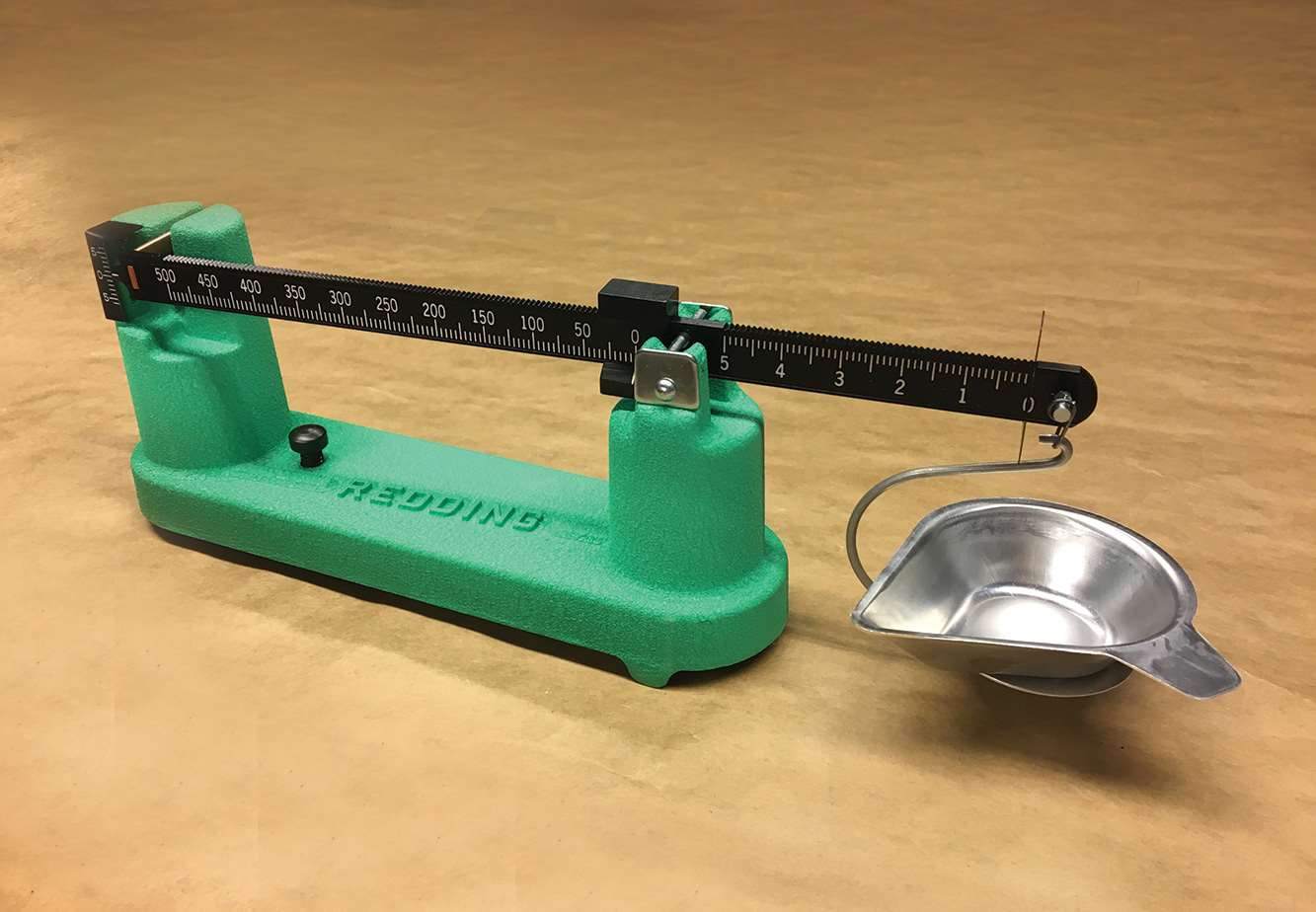
Always be leery of “powder X is the same as powder Y,” remarks. While this is quite literally true in some cases, the context of these may matter greatly. Experienced reloaders may be talking about powders with similar burn rates that yield like results, but that does not mean that charge weights of these powders will be remotely similar. Nor is the net velocity or energy of a certain projectile/powder combination the only parameter to assess in making a performance decision. Especially in a handgun, recoil “signature” can be quite variable, and constitutes both a joy and advantage when done correctly. Here, “correctly” can also be quite different from shooter to shooter.
For starters, two pistol powders are plenty, and we know good shooters who’ve gotten along with one for decades. Rifle is much the same: Pick a powder that runs with the two bullet weights you plan to use most, and don’t add another powder until both those loads are running groups of one MOA or less. (If they won’t, your up-front research or your rifle is probably at fault; good news here is that powder is your least expensive component, and therefore easiest to swap to something else.) Then move on to other calibers, and/or bullet weights as your knowledge of how variables interact expands.
Neatness Matters
That’s “an obvious little notion,” as Ian Fleming's Q. said, but there are lots of reasons to be tidy with powder. While the actual burning or explosion hazard is quite small (unless you’re a complete dunce), powder where it doesn’t belong is juuuuuust the right size, shape and consistency to foul up lots of mechanisms in your reloading. Primer feed mechanics are likely worst, but certainly not the only example. It's interesting to note that single stage or turret systems are far less subject to this annoying fault.
If you do spill powder—filling your measure or overcharging a case are the most common—never vacuum it up. While we don’t know of anyone who has blown up their Hoover, who wants to be a test case? If the quantity is small, sweep it up gently instead, and spread it thinly—yes, we’re serious—on your lawn. It’s loaded with nitrogen (duh) and therefore good fertilizer. Some people burn it in a thin, broad layer, but observe the necessary precautions, and only in small batches.
There’s another general warning about charging, and now is as good a time as any to mention it. Charging mistakes are some of the most preventable in reloading because there are “before” and “after” checks that are easy to make, and issues can be addressed directly. The difficulty arises in diagnosing what went wrong if something happens down the road. Granted, catastrophic failures often have distinctive signatures, but this won’t necessarily help you figure out where in your own process(es) you introduced the error that lead to the malfunction. Time between round assembly and the problem exaggerates this difficulty. The only fix is following the instructions for your reloading guide and equipment (and especially loading tables), and going slowly, especially at first. Reloading is still fun, safe and very cost effective, but only when appropriate cautions are taken and religiously observed. (Like safety glasses? Always??)
Perhaps we’ve cured you of the notion that case charging is the simplest step in the reloading process. Mechanically, of course, this is still true: You are just dumping the powder in the case. But what goes into powder selection and amount as a function of bullet mass and brass prep will seem like magic when you find your own perfect formula, or—more likely—get your tuchas kicked by some old guy or gal with an old gun that runs better than your brand new wonder ever dreamed of.
That’s when the work, and happily the fun too, really get started.
Frank Winn has been studying arms and their relationship to tyranny, meaningful liberty and personal security all his adult life. He has been a firearms safety/shooting instructor for more than 20 years, and earned state, regional and national titles in several competitive disciplines.











